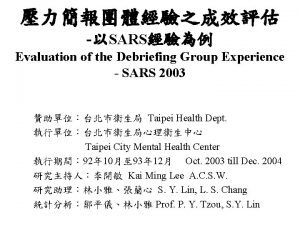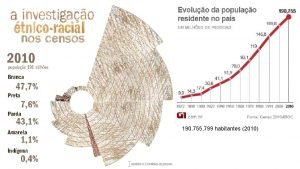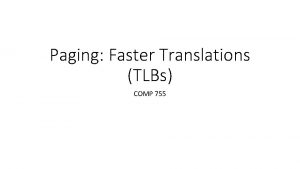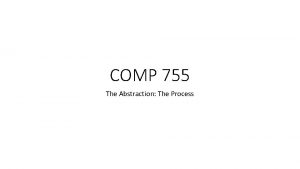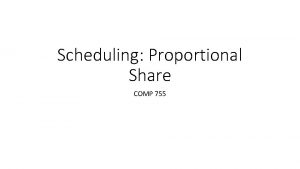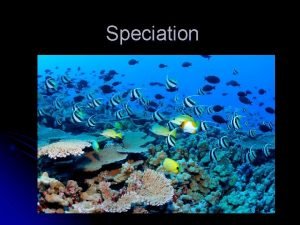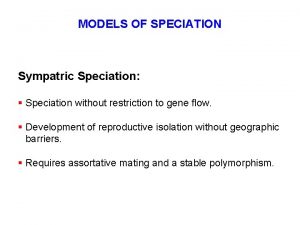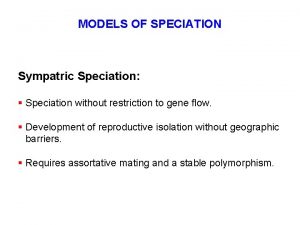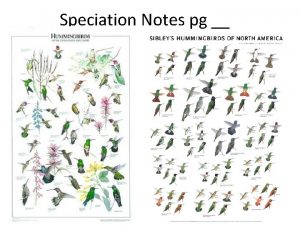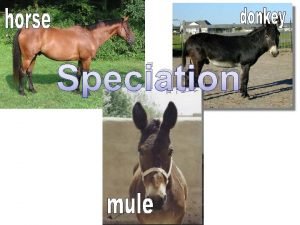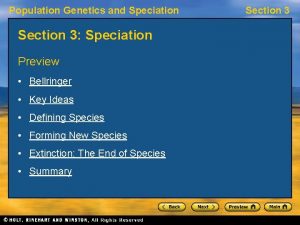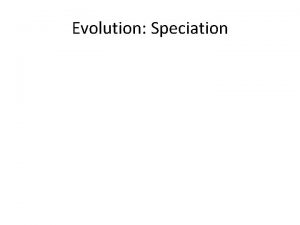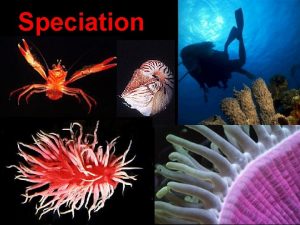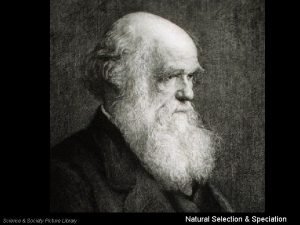Lecture 3 12 755 Chemical Speciation cont Note



















- Slides: 19

Lecture 3 12. 755 Chemical Speciation cont. Note: Review paper Vraspir and Butler 2009 1

Some general paper topic areas • • • Specific geochemistry of element(s) Sources/sinks (rivers, dust, hydrothermal, sedimentary) Influences of metal(s) on primary productivity or other biological processes Paleoclimate (Cd Zn other tracers in biominerals) Ancient Ocean/Co-Evolution of Ocean Chemistry and Life Analytical approaches Metalloenzyme(s) and the relationship(s) to biogeochemical function/processes Policy of Iron Fertilization and other climate mitigation proposals Marine Pollution Redox processes Toxicology Application of Modeling Studies 2

3 Morel, Allen, Saito, Treatise on Geochemisrty 2003

Inorganic Analytical Approaches • Graphite Furnace Atomic Absorption Spectroscopy (GF-AAS) – Older technique, often coupled with solvent extraction, not used as much anymore • Inductively Coupled Plasma Mass Spectrometry (ICP-MS) • Flow Injection/Chemiluminescence/Spectrophotometry • Electrochemistry (Voltammetry) 4

Types of Electrochemical Analyses • Cathodic Stripping Voltametry (Fe, Co, Ni, Zn, Cu) – Hanging Mercury Drop Electrode (CSV-HMDE) – Preconcentrates using adsorption of a metal-Lsynthetic complex – Reduces the metal (and in some cases the ligand) to generate signal • e. g. -0. 6 V to -1. 4 V • Anodic Stripping Voltametry (Zn, Cd, Pb) – Thin Film Mercury Rotating disk electrodes (ASV TF-RDE) – Preconcentrates using adsorption of elemental metal holding a reduction potential – No synthetic Ligand needed – Oxidizes the metal to achieve signal • e. g. -1. 4 to -0. 4 V 5

6

Bruland 1988 7

8

9

Calibration of the Synthetic Ligand with EDTA 10

Kinetics of Competitive Ligand Exchange 11

To actually calculate ligand concentrations, and Kcond titration data is analyzed using Scatchard plots or van den Berg/Ruzic plot, or non-linear fitting 12

From Vraspir and Butler 2009 13

14

15

16

In culture, copper ligands are produced by cyanobacteria Moffett and Brand, Limnol Oceanogr, 1996 17

Cobalt ligands in seawater have a biological source (Production of ligands in a Synechococcus feature in the Costa Rica Upwelling Dome Saito et al. , Limnol Oceanogr 2005) 18

From Buck and Bruland 2007 The physiochemical speciation of dissolved iron in the Bering Sea, Alaska Limnol Oceanogr, 2007 “These observations suggest that the phytoplankton community is readily able to access dissolved Fe from the Fe. L 1 complex, resulting in excess L 1 between dissolved Fe and L 1 ligand concentrations in samples with intermediate dissolved Fe, and this is a seemingly ubiquitous feature of dissolved Fe cycling in the marine environment. ” • Fe. L 1 as a nutritional source? • How do phytoplankton acquire iron and other bioactive metals? 19
 Sympatric speciation vs allopatric speciation
Sympatric speciation vs allopatric speciation Cont or cont'd
Cont or cont'd Cont or cont'd
Cont or cont'd Comp 755
Comp 755 190 755 799
190 755 799 Comp 755
Comp 755 Comp 755
Comp 755 Comp 755
Comp 755 How to round to the nearest metre
How to round to the nearest metre Mlfq scheduling
Mlfq scheduling Comp 755
Comp 755 01:640:244 lecture notes - lecture 15: plat, idah, farad
01:640:244 lecture notes - lecture 15: plat, idah, farad Lecture note tiu
Lecture note tiu Difference between note making and note taking
Difference between note making and note taking Singnal words
Singnal words Note taking definition
Note taking definition Goods received note
Goods received note Simple discount note
Simple discount note Debit note
Debit note Difference between note making and note taking
Difference between note making and note taking

